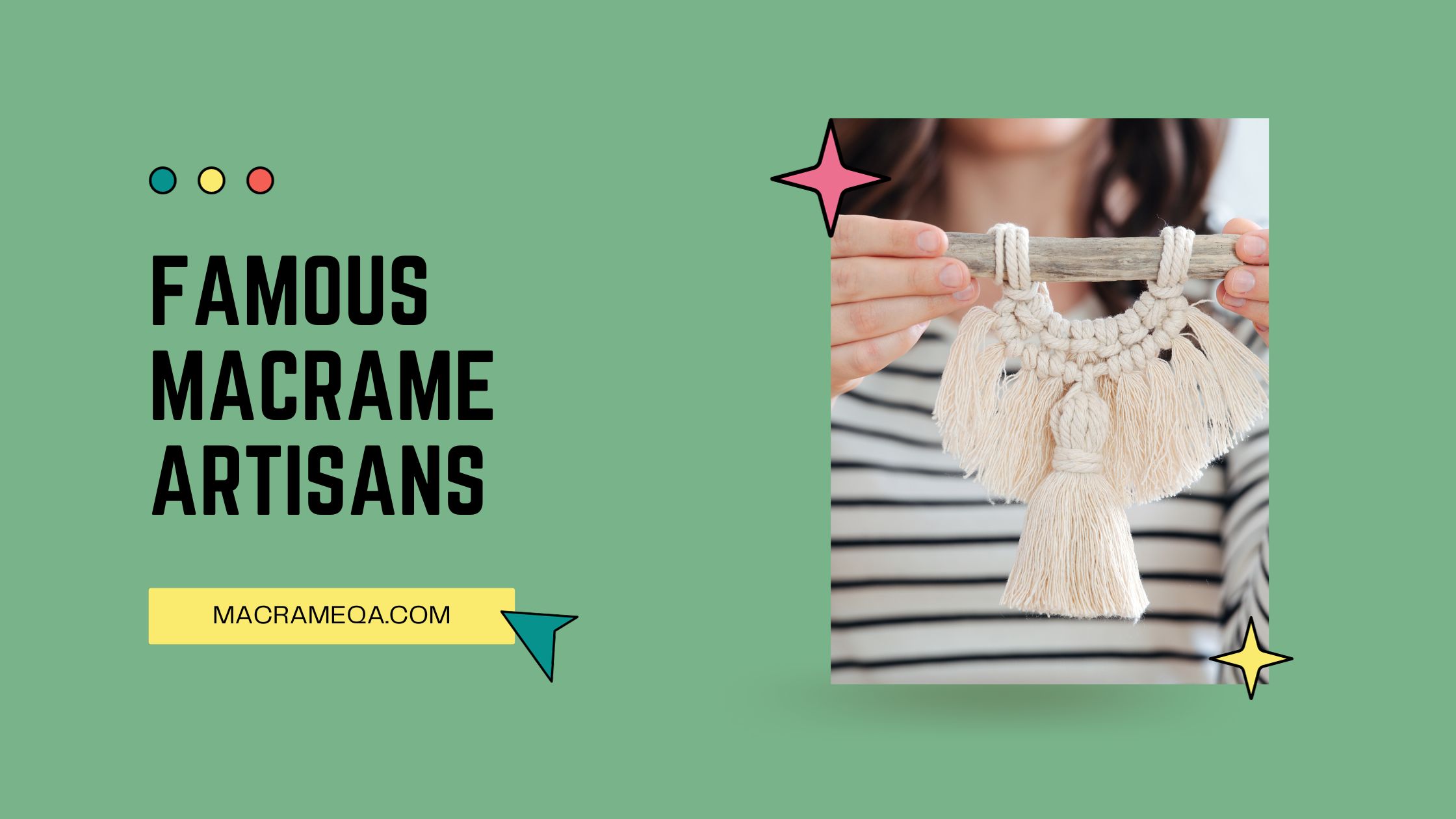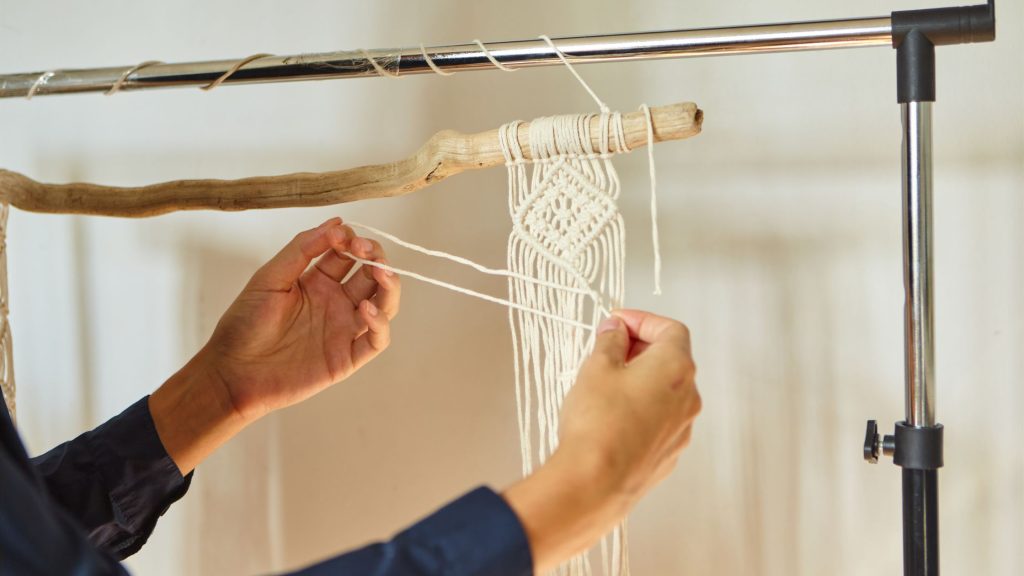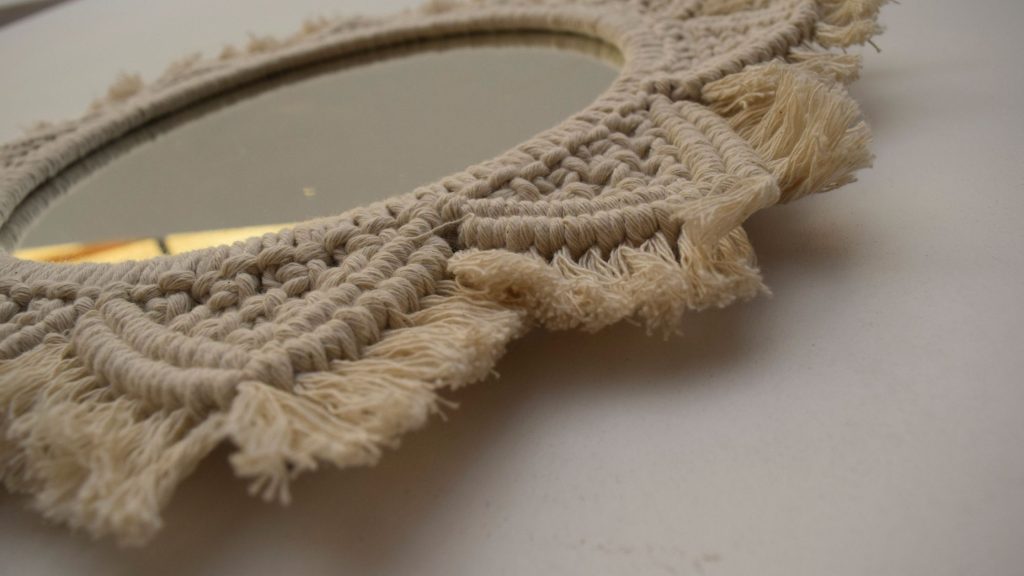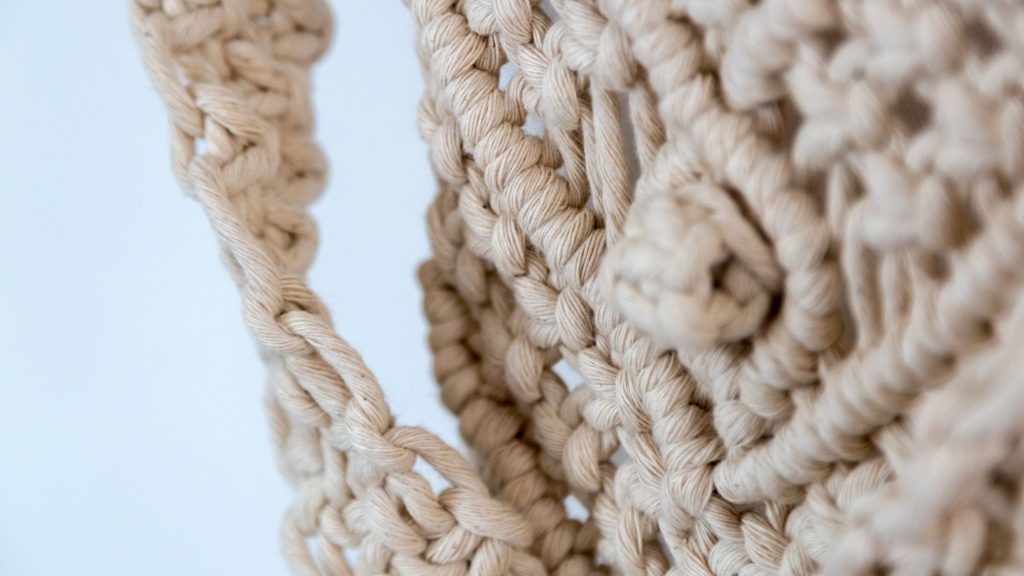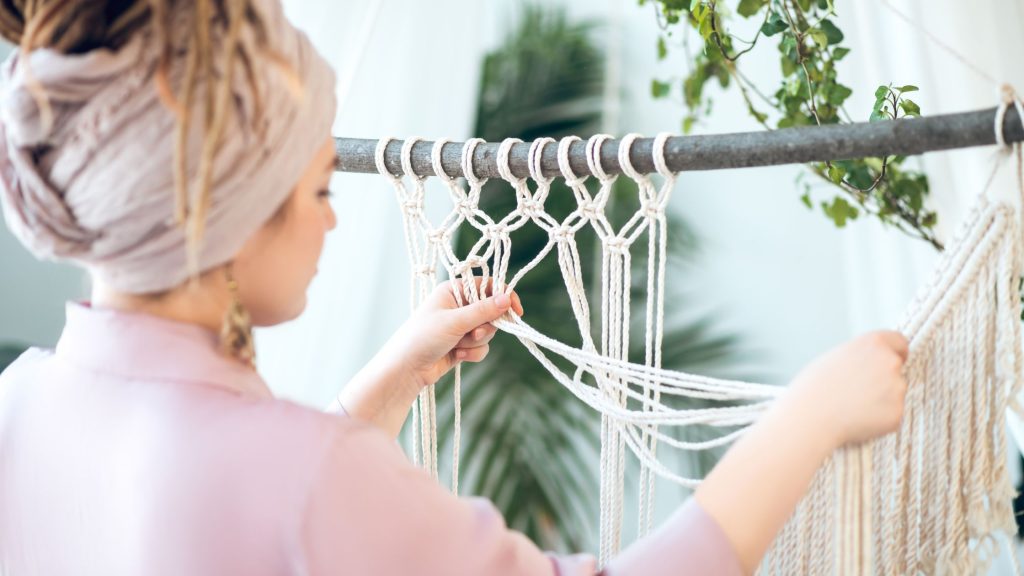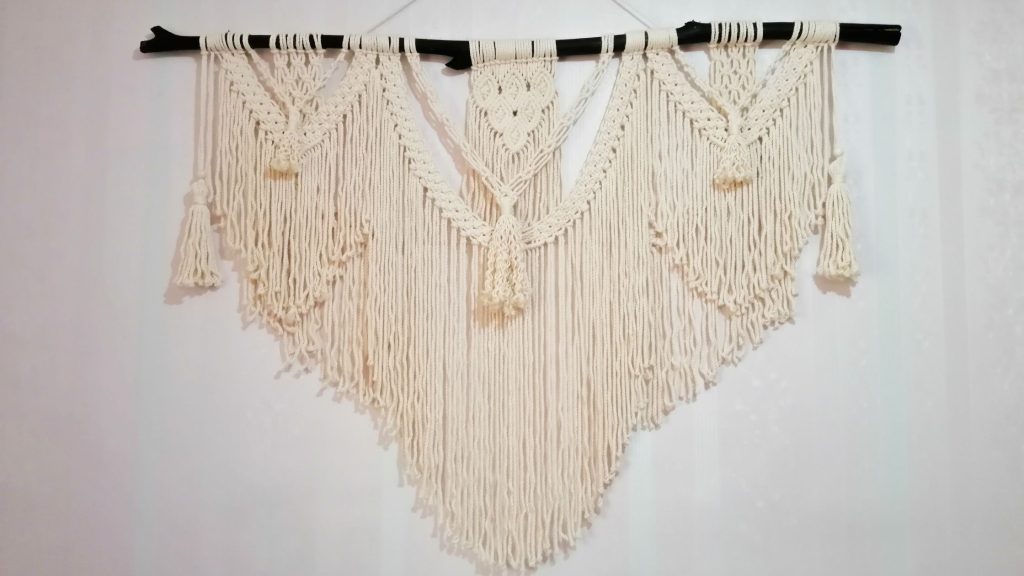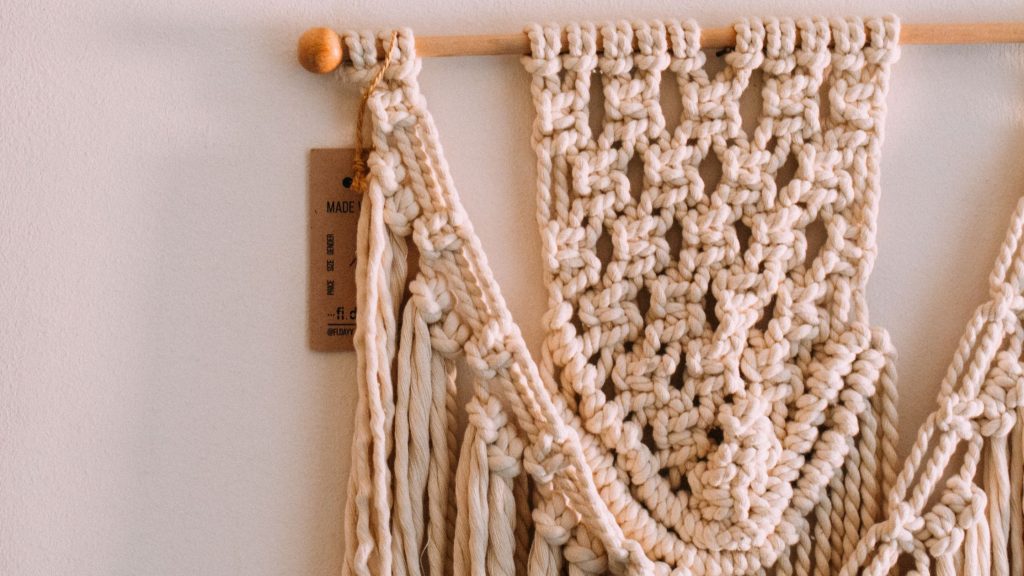Did you know that macrame, the art of knotting strings to create intricate patterns, has a rich history? From ancient civilizations like the Arabs, Turks, and ancient Egyptians to the Renaissance period in Europe, macrame has been cherished and practiced by skilled artisans throughout the ages. While their names may not be as well-known as other artists, these macrame artisans of the past have left an indelible mark on the world of crafts. Let us take a journey into the past and explore the legacy of these talented individuals who turned ordinary cords into stunning works of art.
Ancient Origins of Macrame
Macrame, the art of knotting cords to create intricate patterns, has a rich and fascinating history that dates back to ancient times. While the exact origins of macrame are difficult to pinpoint, evidence suggests that it was practiced in various cultures across the world. Let’s explore the ancient origins of macrame in China and Egypt.
Macrame in Ancient China
Ancient Chinese civilization has long been known for its innovative techniques and craftsmanship, and macrame is no exception. The art of intricate knotting can be traced back to the Tang Dynasty (618-907 AD), where it was predominantly used in textiles and clothing.
Macrame was not only a decorative art form but also served practical purposes, such as creating sturdy fishing nets and horse reins. The Chinese artisans mastered the art of knotting and developed intricate patterns and designs that fascinated people across different regions.
Macrame in Ancient Egypt
The ancient Egyptians were known for their mastery of various art forms, and macrame was no exception. Macrame techniques were used to create beautiful and functional pieces, often using plant fibers such as flax, papyrus, and palm leaves.
Egyptian macrame, dating back to around 1400 BCE, flourished during the New Kingdom period. It was primarily used for creating decorative elements in garments, wall hangings, and even temple decorations. The intricate knotting techniques employed by Egyptian artisans demonstrated their skill and creativity, showcasing the art’s early prominence.
Macrame During the Renaissance
The Renaissance period marked a significant shift in European art and culture, and macrame continued to evolve during this time. Let’s delve into the role of macrame in Europe and the Americas during the Renaissance.
Macrame in Europe
Macrame gained popularity in Europe during the 17th and 18th centuries, becoming closely associated with aristocratic households. European artisans began incorporating various macrame techniques into the creation of decorative accessories, such as lace, trims, and edgings for clothing and home decor.
Italy, in particular, emerged as a hub for macrame craftsmanship. Venetian macrame lace, known as “Punto a Reticello,” became highly sought after for its intricate designs and delicate beauty. The skill and artistry displayed by European macrame artisans during this era laid the foundation for its future growth.
Macrame in the Americas
As European explorers reached the Americas, they brought with them the art of macrame. Native American tribes quickly adopted this intricate knotting technique and started incorporating it into their own artistic traditions.
Macrame became a vital part of Native American culture, with artisans using natural materials such as twine, sinew, and fibers from plants like hemp and yucca. The Native Americans created exquisite macrame pieces ranging from clothing and jewelry to ceremonial regalia, showcasing their ingenuity and blending traditional techniques with the newfound art form.
Macrame’s Popularity in the 19th Century
The 19th century witnessed a resurgence of macrame, particularly in the Victorian Era, as well as its increasing popularity in North America. Let’s uncover the prominence of macrame during this time.
Macrame in the Victorian Era
The Victorian Era brought about a renewed interest in decorative arts and crafts, and macrame became immensely popular as a result. Victorian women embraced macrame as a domestic art form, creating intricate lace-like pieces for clothing and home decor.
Macrame was particularly favored for its ability to embellish everything from tablecloths and curtains to bedspreads and clothing accessories. The delicate knotting techniques used in Victorian macrame demonstrated elegance and refinement, making it a must-have in fashionable Victorian homes.
Macrame in North America
Macrame also found its way to North America during the 19th century, where it quickly gained popularity. Thanks to the advancements in technology and increased accessibility to materials, macrame became a widespread craft. It was widely practiced among both Native American communities and the settlers, each incorporating their unique cultural influences.
In North America, macrame was used to create functional items such as hammocks, plant hangers, and fishing nets, as well as decorative pieces like wall hangings and belts. This era marked a significant shift in the use of macrame from primarily ornamental purposes to practical and utilitarian applications.
Influence of Arts and Crafts Movement
The Arts and Crafts Movement, which emerged in the late 19th century, had a profound impact on various art forms, including macrame. Let’s explore the influence of this movement on the art of macrame and the prominent artisans who contributed to its growth.
Macrame in the Arts and Crafts Movement
The Arts and Crafts Movement aimed to revive traditional craftsmanship and promote a return to handmade, high-quality goods. Macrame, with its intricate hand-knotting techniques, became a natural fit within this philosophy.
Craftsmen and women during this movement incorporated macrame into their creations, emphasizing the importance of skillful craftsmanship and the celebration of natural materials. Macrame designs were incorporated into furniture, decorative panels, and even bookbindings, elevating the status of macrame as a respected art form.
Prominent Artisans of the Movement
Several notable artisans contributed to the growth and popularity of macrame during the Arts and Crafts Movement. One such figure was Mary E. Fry, an American macrame artist who became renowned for her intricate works and innovative designs. Fry’s creations became highly sought after, and she played a significant role in promoting macrame as a respected decorative art form.
Another influential figure was Ada Wentworth Fitzwilliam, an English macrame artist who specialized in creating strikingly detailed macrame panels and hangings. Fitzwilliam’s meticulously crafted pieces showcased the beauty and complexity of macrame, further establishing its place in the Arts and Crafts Movement.
Macrame in the 20th Century
The 20th century witnessed the evolution of macrame as it embraced the modernist movements of Art Nouveau and Art Deco. Let’s explore how macrame found its place in these artistic styles.
Macrame in Art Nouveau
Art Nouveau, characterized by its organic and flowing forms, provided macrame with a new outlet for artistic expression. Macrame designs were incorporated into furniture, lampshades, and decorative panels, embracing the movement’s love for intricate and sinuous lines.
In the early 20th century, Swiss artist and designer Madame Elyse Briclid played a significant role in bringing macrame to the forefront of Art Nouveau. Briclid’s macrame pieces combined delicate beadwork and innovative knotting techniques, creating visually captivating and unique works of art.
Macrame in Art Deco
As the Art Nouveau movement transitioned into Art Deco, macrame evolved alongside it. Art Deco design favored geometric patterns and bold, dramatic elements, which macrame artists embraced in their creations.
Macrame was used to adorn furniture, create wall hangings, and add intricate details to fashion accessories such as purses and belts. The versatility of macrame allowed artists to experiment with various materials, including metals and synthetic fibers, resulting in stunning and innovative designs.
Revival of Macrame in the 1960s
The 1960s marked a significant revival of macrame as the art form became synonymous with the free-spirited and bohemian ideals of the era. Let’s explore how macrame became intertwined with the counterculture of the time and highlight some prominent macrame artisans.
Macrame in Hippie Counterculture
During the 1960s and 1970s, macrame experienced a resurgence as it became closely associated with the hippie counterculture movement. The art form’s simplicity and accessibility appealed to the ideals of self-sufficiency and harmony with nature that characterized the era.
Macrame plant hangers, wall hangings, and clothing accessories became immensely popular among the free-spirited youth of the time. Macrame workshops and tutorials popped up across the country, providing a platform for individuals to explore their creative expression through knotting techniques.
Prominent Macrame Artisans of the 1960s
The macrame revival of the 1960s saw the rise of several influential artisans who contributed to the growth and popularity of the craft. One such artist was Judy Palmer, who became known for her unique macrame jewelry designs. Palmer’s intricate and colorful creations captured the essence of the era and helped solidify macrame as a fashionable and artistic medium.
Jan Millington and her sister Marianne caught the attention of the macrame community with their book “Hitching Rides,” which showcased their innovative techniques and patterns. Their contributions to the macrame revival further fueled its popularity and inspired countless individuals to explore the craft.
Contemporary Macrame Artisans
Macrame continues to captivate artists and enthusiasts around the world. Let’s explore some influential contemporary macrame artists and how macrame has found its place in modern interior design.
Influential Contemporary Macrame Artists
The contemporary macrame scene is thriving with talented artists pushing the boundaries of the craft. One such artist is Sally England, whose large-scale installations have been featured in prestigious venues and publications. England’s unique approach to macrame combines traditional knotting techniques with unconventional materials, resulting in visually stunning and thought-provoking pieces.
Emily Katz is another prominent macrame artist, renowned for her modern and minimalist designs. Katz’s workshops and online tutorials have empowered countless individuals to take up macrame and explore their creativity.
Macrame in Modern Interior Design
Macrame has made a significant impact on modern interior design, offering a versatile and visually striking way to add texture and depth to any space. Macrame wall hangings, plant hangers, and curtains have become popular choices for those seeking to infuse their homes with bohemian or minimalist aesthetics.
The resurgence of macrame in interior design has also been accompanied by the use of natural and sustainable materials, aligning with the growing emphasis on eco-friendly practices. Macrame artisans have embraced this trend, using materials such as recycled cotton and organic fibers to create stunning pieces that not only enhance interiors but also promote sustainable living.
Macrame in Fashion and Accessories
In addition to its presence in interior design, macrame has also found its way into the world of fashion and accessories. Let’s explore how macrame has influenced haute couture and boho fashion.
Macrame in Haute Couture
Haute couture, known for its artistry and craftsmanship, has embraced macrame as a means to create unique and intricate fashion statements. Luxury fashion houses have incorporated macrame into their collections, weaving delicate patterns and designs into garments and accessories.
Macrame techniques have been utilized to create everything from exquisite lace-like overlays to bold statement necklaces and belts. The presence of macrame in haute couture emphasizes its status as a highly skilled and respected art form.
Macrame in Boho Fashion
Macrame’s association with the bohemian lifestyle has made it a staple in boho fashion. Boho-inspired clothing, characterized by its relaxed and free-spirited aesthetic, often incorporates macrame as a way to add texture and visual interest.
Macrame techniques are used to create fringes, hemlines, and decorative elements in boho dresses, tops, and accessories. The earthy and organic aesthetic of macrame aligns perfectly with the boho fashion ethos of embracing natural materials and artistic expression.
Macrame in Indigenous Cultures
Macrame’s influence extends far beyond the realms of fashion and design, as it has played a significant role in the artistic traditions of indigenous cultures. Let’s explore how macrame has been incorporated into Native American art and indigenous Oceanic art.
Macrame in Native American Art
Macrame has a long history in Native American art, with tribes across the Americas incorporating the knotting technique into their traditional crafts. Native American macrame artists have used the art form to create intricate patterns in textiles, jewelry, and ceremonial regalia.
Each tribe has its distinct weaving techniques and designs, with macrame often symbolizing cultural identity and tribal affiliations. The striking beauty of Native American macrame pieces reflects the deep connection between the artisans and their heritage.
Macrame in Indigenous Oceanic Art
Indigenous cultures in the Pacific Ocean region, such as Hawaii, Tahiti, and Fiji, have also embraced macrame as a form of artistic expression. These cultures have used macrame techniques to create decorative accessories, including headdresses, belts, and bags.
Macrame is deeply embedded in the cultural and spiritual practices of indigenous Oceanic communities. The intricate knotting patterns often hold symbolic meanings tied to nature, mythology, and ancestral heritage.
Exploring Macrame’s Global Reach
Macrame’s appeal and relevance extend across continents, with various countries and cultures embracing this art form. Let’s explore macrame’s global reach and its cultural significance.
Macrame Around the World
Macrame has found its place in numerous countries worldwide, with each region embracing the art form in its unique way. Countries such as China, India, Morocco, and Brazil have cultivated their distinctive macrame traditions, incorporating cultural symbolism and regional techniques.
Macrame’s global presence is further amplified by the widespread availability of tutorials, workshops, and online communities that connect artisans and enthusiasts worldwide. The exchange of ideas, patterns, and techniques has enriched the art form and sparked innovation within the macrame community.
Cultural Significance of Macrame
Beyond its artistic value, macrame holds cultural significance in many societies. It serves as a means of preserving cultural traditions, passing down ancestral knowledge, and reinforcing community bonds.
In indigenous cultures, macrame often symbolizes spirituality, protection, and connection to nature and ancestors. It plays a vital role in ceremonies, rituals, and daily life, carrying the weight of cultural heritage with each knot.
In other cultures, macrame has become a means of cultural exchange and celebration. Festivals and exhibitions showcase macrame’s diversity, inviting people from different backgrounds to appreciate and immerse themselves in this timeless craft.
Conclusion
As we journey through the ancient origins, historical milestones, and contemporary expressions of macrame, it becomes clear that this art form has transcended time and borders. From ancient civilizations to modern-day artisans, macrame continues to captivate and inspire, weaving its intricate patterns into the fabric of human creativity and cultural diversity. So, why not pick up some cords, embrace your creativity, and join the global macrame community today?

